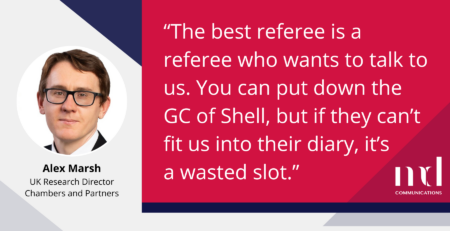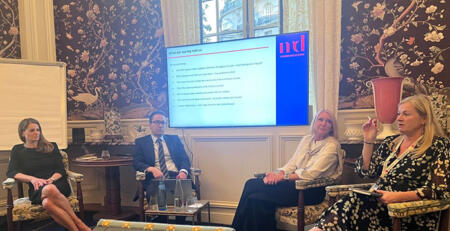To coincide with the launch of our Asia Pacific desk, in part one of our latest Thought Leader interview, we spoke to John van der Luit-Drummond, UK Bar and Asia Pacific editor at The Legal 500, about his role, the crucial role the directories play in building a relationship between in-house lawyers and external counsel, and the latest trends in the Asia Pacific legal market.
John, you have an expansive role at The Legal 500, covering the UK Bar and Asia Pacific to build relationships with lawyers and oversee and edit The Legal 500 coverage in both directories. What do you enjoy most about your role and tell us about your daily routine?
Editing two guides is a bit of a juggling act. Although the UK Bar and Asia Pacific rankings come out at different times of the year, there is a lot of preparation that goes into both and as soon as one ends the other is just beginning.
Every week in the UK I have meetings with clerks and barristers to talk about the Bar, and ahead of the UK deadline, I go into chambers of an evening to provide some top submission tips to those sets that ask for it.
Overseeing the Asia Pacific guide means several weeks travelling to take the market’s pulse, get some hot gossip, and, again, provide submission training to firms. Travelling can be a lot of fun. In the past 18 months, I’ve visited Singapore, Mumbai, Delhi, Tokyo, Hong Kong, and most recently Sydney.
In between all of that, there is day-to-day team management, liaising with other departments, chairing events and roundtables, attending external events, as well as commissioning and editing our new magazine, fivehundred.
As for what I enjoy the most, well, this probably isn’t true of everyone in legal publishing, but I genuinely enjoy talking to lawyers and clerks. Understanding their work, how they do it, as well as finding out what makes their job easier or harder can be fascinating. What can be frustrating, however, is having that insider knowledge but not always being able to write about it!
What are the major distinctions in coverage for Asia Pacific compared to the UK and how you build contacts and relationships? Also, any specific trends you’ve noticed in your coverage on Asia Pacific over the last year?
In some ways, it’s a bit like comparing apples and oranges. The UK is a sophisticated market, but the same cannot be said for all the countries we cover across Asia Pacific. Some jurisdictions are a decade, or even three, behind the UK in terms of the size of firms, lawyer specialisation, and deal/dispute complexity or value. Having an appreciation of where a particular country sits within the global legal market is therefore really important when comparing work between firms.
When it comes to building relationships abroad, it’s no different from back home. Everyone wants to be ranked, which makes getting an audience with firm leaders pretty easy, especially in emerging jurisdictions where firms are keen to impress. Some jurisdictions need more hand-holding than others and what can sometimes be difficult is explaining that The Legal 500 truly is an evidence-based research project and not ‘pay to play’ publication. You can’t buy your way into it.
As for specific trends – where to start? Every jurisdiction has something to offer. Over the next few years, it’ll be interesting to see which international firms start reassessing their Asia operations, especially if there is a downturn in the global economy. The arguably oversaturated Hong Kong and Singapore markets will be the ones to pay attention to, and we’ve already seen some movement there over the last year to 18 months.
Sometimes there’s scepticism over the value-add of legal directories and how much of an impact they really play on in-house lawyer relations with external counsel. What do you say to the naysayers?
The vast majority of lawyers understand the value of what we do and we know from our conversations with them that in-house counsel use directories in their decision-making process. If GCs didn’t see their value then they wouldn’t flood us with client feedback – positive and negative – on an annual basis. The same goes for the Bar and instructing solicitors.
I’ve lost count the number of times a lawyer or clerk has admitted to receiving work as a direct result of our rankings. I’ve even had conversations with lawyers in Asia who were unhappy about being dropped a tier because clients in their jurisdiction only allow firms in, for example, the top two tiers to pitch for work.
My experience is that the naysayers are a very small minority. Yes, a few firms will feel confident in their market position and may not engage with our research, but their competition most likely will and benefit from doing so.
Finally, lawyers’ need for market recognition has not diminished. Editors and researchers know this better than anyone. The day a new guide publishes and I don’t get an inbox full of emails querying or complaining about a ranking is the day I’ll start worrying about the future of directories. Frankly, we are nowhere near that situation if the last 12 months are anything to go by.
Watch a recording of the IBA webinar on how GCs and the directories can work together.
In part two of this interview, John discusses mental wellbeing in the legal profession and gender diversity and reveals his top-five tips to improve your rankings.












